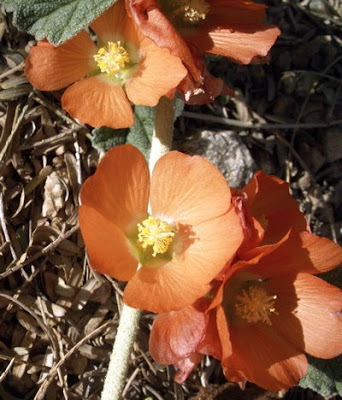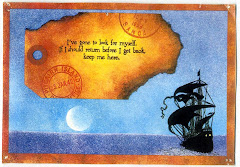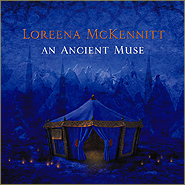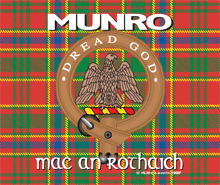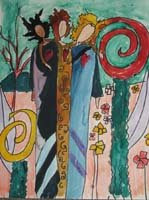
Saturday, June 27, 2009
PRAYERS FOR ANNA

Tuesday, June 23, 2009
HEALING A BROKEN HEART
The wild prairie rose is my absolute favorite North Dakota wildflower. It has a wonderful scent, and is always in bloom on my birthday. One of my most treasured possessions is a dried prairie rose in a glassine case, with a note written by my mother, dated June 23, 1959: "Julie just brought me this rose. She certainly does love flowers."
**********
I have a broken heart. Something that I desperately wanted - no, desperately needed - at this time of my life has been taken away from me. Rather, I should say, denied me, because it wasn't really mine in the first place.
I won't go into details about the situation, but I do want to tell you how it has left me feeling: tearful, unwanted, old, useless, insignificant, stupid, inferior, powerless, naive, broken, defeated, hollow, hopeless, set adrift, second class, disrespected.
That is a whole bundle of bad emotions - really some bad juju to be carrying around. Fortunately, after a few days I am past the worst. I'm not crying any more: There aren't any tears left to be shed at the moment.
Of course, I have had way worse things happen in my life. My family is fine, and Dan is not divorcing me! Compared to the deaths of loved ones, this doesn't even place very high on the list.
But with each sorrowful event I've lived through, I have discovered that there comes a time when one cannot stand the intensity of the emotions. The more intense the emotions, the less the body can take it, and has to begin to return to normal.
That's the point I'm at now. So how do I begin to recover? Funny as it may seem, I have been receiving solace from a poem. It's "What is so rare as a day in June?" which I printed in my post of June 10. To be sure, it has been resonating with me. I originally used it to illustrate the rare beauty of June days, but now I am recalling lines that remind me of the healing powers of nature in the summertime.
How about:
"Now the heart is so full that a drop overfills it, We are happy now because God wills it; No matter how barren the past may have been, 'Tis enough for now that the leaves are green."
Or:
"Who knows whither the clouds have fled? In the unscarred heavens they leave not wake/And the eyes forget the tears they have shed, The heart forgets its sorrow and ache."
Is it really true, could immersing myself in the natural world this summer restore my soul and replenish my depleted sense of self?
If I sit every fair evening under the old elm tree that shades my deck, as I have for the past 26 years, will I again regain the happiness I have found there? When the thick leaf canopy blocks the rain, when the branches sough as a cooling breeze springs up, when the leaves are silhouetted black before the full white moon, will I feel a surge of pleasure and forget my tears? Will I then go to bed and sleep deeply and well?
If I sit by the Missouri River and try to follow the course of one drop of water, will I realize that life flows on, and that like rain and evaporation, it is part of a great cycle that usurps you and me?
If I drive up the hill to the lookout blockades at Fort Abraham Lincoln, will I remember the struggles of those people who lived here long before me - both the Native Americans and the soliders of Custer's Seventh Cavalry?
If I listen to bird song, will I allow my precious "illumined being" to be "o'errun with the deluge of summer it receives"?
If I watch waves lap against the lake shore at the immense Lake Sakakawea, will I realize that "whatever life has ebbed away, comes flooding back with a ripply cheer, into every bare inlet and creek and bay"?
If I sit "in the warm shade" on newly-cut grass, will I "feel right well"? Will "the heart in my dumb breast" flutter and sing?
If I drive out of town in order to look up at a night sky undimmed by city lights, will I realize my insignificance - and at the same time, my greatness? After all, said Carl Sagan, "We ourselves are made of star stuff."
If, having written about the wild sweet rockets and recalled other beloved North Dakota wildflowers, will I re-discover the joys of my childhood?
That's yet to be seen. Reminiscing about my favorite wildflowers is my first step in the healing.
North Dakota wildflowers aren't terribly showy. We don't have meadows full of fireweed or bluebonnets, rivers of California poppies, hills of golden daffodils. No, North Dakota wildflowers are usually quite small, low to the ground and hard to spot. They may be insignificant, humble and fragile, they may stand alone, they may be battered by rain and winds, but they survive, and maybe, just maybe, I will survive this too.
The New England wild aster may have had its beginnings in the East, but now it is common across the US.
Individual flax plants are not very striking, but a field of flax resembles an ocean - a true blue ocean on the prairie.
Loco is "crazy" in Spanish and describes the erratic actions of horses and livestock that eat this poisonous plant. As a child who was known to sample the nectar of flowers like lilac, honeysuckle and bluebells, I am so glad I did not sample this one.
I am violently allergic to this beautiful, Monarch-butterfly attracting plant. One time I was at the river bottoms south in Bismarck when entire meadows of milkweed were in full bloom. By the time we went home, I had the worst headache I'd ever had in my life, and had other symptoms which lasted more than a week.

These are among the most delicate of plants, their stems whisper thin.

These aren't as dramatic as the cultivated purple prairie coneflower, but I like them better. The pink petals look like ballerina dancers' skirts to me. When echinaea was all the rage as a cold remedy a few years back, people were digging up and destroying these plants to sell.
 PRAIRIE SMOKE
PRAIRIE SMOKEThis beautiful fall flower has been accused of bringing on hay fever, but the actual culprit is ragweed!
I did not pick this flower, but left it where it grew. It is both stinky and sticky, making it undesirable as a cut flower. (But still pretty!)
Friday, June 12, 2009
MY FAVORITE PEEPS - AND A NAUGHTY DOG


Then, a photo of my dear daughter and my beloved husband. When I saw this picture I knew exactly how old the camera was. These shots were taken after Dan drove Kristen's new (used) car out to Washington, DC in March 2007!! (Yeah, you wouldn't see them sitting outside in shirt sleeves in March in ND!)
And finally, my wonderful (ahem) dog, Gracie, in a series of three photos that tell a little story:
 ME: (Sternly) "I don't think that's an ordinary old stick. That's one of the slats from the baby gate that was meant to keep you in the kitchen.
ME: (Sternly) "I don't think that's an ordinary old stick. That's one of the slats from the baby gate that was meant to keep you in the kitchen.  GRACIE: "But not so sorry that I'm gonna quit chewing on it!!"
GRACIE: "But not so sorry that I'm gonna quit chewing on it!!"Wednesday, June 10, 2009
WHAT IS SO RARE AS A DAY IN JUNE?
 "And what is so rare as a day in June/Then, if ever, come perfect days", wrote the poet James Russell Lowell.
"And what is so rare as a day in June/Then, if ever, come perfect days", wrote the poet James Russell Lowell.Well, so far the June days in North Dakota have been rare, and not in a good way. This past Saturday, the city of Dickinson, about 90 miles west of Bismarck, had two inches of snow!! Now that's a rare June day! I had argued with my husband for years over whether or not it had ever snowed in North Dakota in June. I maintained that it had not.
I have been proven wrong, and not only by last Saturday's snow. The TV newscasters and meteorologists trotted out old records to show that that it has indeed happened in the past. (I will continue to maintain that it has never snowed in ND in September - I suppose I am wrong about that too. Maybe I grew up in the Camelot area of ND??)
It has also been really cold here this June. Yesterday it was in the 50s F when it should be in the 70s. Dan and I have only been able to dine out on the deck once all season. And we are still getting frost warnings as of June 10, when the average last frost in ND is May 21!!.
My friend from Dickinson sent me a photo of their snow, but I am not going to re-print it here. Too depressing. Instead, I will show you a beautiful flower!

Sweet rocket or dame's rocket may be shunned here, but it is certainly valued enough to be showcased in one of the most famous gardens in the world, created by the English novelist Vita Sackville-West and her husband Nigel Nicholson. (And also at Thomas Hardy's cottage in Dorset, according to Rowan - see her comment.)
I hope the remainder of our June days will be "rare" too - but rare as defined by Lowell. Following is his entire poem:
AND what is so rare as a day in June?
Then, if ever, come perfect days;
Then Heaven tries earth if it be in tune,
And over it softly her warm ear lays;
Whether we look, or whether we listen,
We hear life murmur, or see it glisten;
Every clod feels a stir of might,
An instinct within it that reaches and towers,
And, groping blindly above it for light,
Climbs to a soul in grass and flowers;
The flush of life may well be seen
Thrilling back over hills and valleys;
The cowslip startles in meadows green,
The buttercup catches the sun in its chalice,
And there's never a leaf nor a blade too mean
To be some happy creature's palace;
The little bird sits at his door in the sun,
Atilt like a blossom among the leaves,
And lets his illumined being o'errun
With the deluge of summer it receives;
His mate feels the eggs beneath her wings,
And the heart in her dumb breast flutters and sings;
He sings to the wide world, and she to her nest,-
In the nice ear of Nature which song is the best?
Now is the high-tide of the year,
And whatever of life hath ebbed away
Comes flooding back with a ripply cheer,
Into every bare inlet and creek and bay;
Now the heart is so full that a drop overfills it,
We are happy now because God wills it;
No matter how barren the past may have been,
'Tis enough for us now that the leaves are green;
We sit in the warm shade and feel right well
How the sap creeps up and the blossoms swell;
We may shut our eyes but we cannot help knowing
That skies are clear and grass is growing;
The breeze comes whispering in our ear,
That dandelions are blossoming near,
That maize has sprouted, that streams are flowing,
That the river is bluer than the sky,
That the robin is plastering his house hard by;
And if the breeze kept the good news back,
For our couriers we should not lack;
We could guess it all by yon heifer's lowing,-
And hark! How clear bold chanticleer,
Warmed with the new wine of the year,
Tells all in his lusty crowing!
Joy comes, grief goes, we know not how;
Everything is happy now,
Everything is upward striving;
'Tis as easy now for the heart to be true
As for grass to be green or skies to be blue,-
'Tis for the natural way of living:
Who knows whither the clouds have fled?
In the unscarred heaven they leave not wake,
And the eyes forget the tears they have shed,
The heart forgets its sorrow and ache;
The soul partakes the season's youth,
And the sulphurous rifts of passion and woe
Lie deep 'neath a silence pure and smooth,
Like burnt-out craters healed with snow.
~James Russell Lowell
Saturday, June 6, 2009
MARY STEWART IS MAGIC
 A couple of days ago I finished reading "The Crystal Cave", the first book in Mary Stewart's Arthurian quartet. I can't believe how much I enjoyed it. I should have known better than to doubt I would. After all, Mary Stewart has been one of my favorite authors since the mid-1960s, when I was a teenager.
A couple of days ago I finished reading "The Crystal Cave", the first book in Mary Stewart's Arthurian quartet. I can't believe how much I enjoyed it. I should have known better than to doubt I would. After all, Mary Stewart has been one of my favorite authors since the mid-1960s, when I was a teenager.However, I had become angry and disappointed with Ms. Stewart and refused to read her anymore when I found out she had, in beginning her Arthurian saga, changed her literary direction.

Let me explain. I first discovered Mary Stewart when one of my friends and her mother recommended "a great book" called "The Moon-Spinners". After I finished it, I wanted to read more of Ms. Stewart and looked for her books wherever I could find them.
This was not so easy at the time. I usually only had access to the small Crosby public library and the Crosby Rexall drugstore, which sold some paperbacks. Twice a year our family traveled to the "big city" of Minot, ND, where I was usually able to snag a couple of her books.
"The Moon-Spinners" was not Stewart's first book, but it was the one that made her so popular with Americans, because Walt Disney made it into a movie starring Hayley Mills and a movie tie-in edition of the book was released. (Please, please do not watch this awful movie. Poor Hayley Mills was terribly miscast in the role.)
For all its failings, however, the movie did expose Stewart to a wider audience, and the publishers brought out paperback editions of her previous books for American readers eager for more Mary Stewart.
As I grew older and joined book clubs, I was able to purchase her books in hardcover as they were released.
How I loved these modern mystery-suspense-romances. They were almost always written in first person from the point of view of a plucky, intelligent, capable heroine. These English ladies were no Gothic governesses, no wilting wildflowers dependent on a man to rescue them. However, there was always a man in the picture. He and the heroine would slowly fall in love while together solving the mystery. (These were certainly not bodice rippers.)
The one mystery which remained an enigma, and which I have never figured out no matter how many times I read "The Ivy Tree", was whether or not Annabelle was an imposter or the long-lost biological daughter!
Equally important to the story and the characters were the surroundings. Stewart took us to such exotic locales as the Pyrenees of France, the Lippizaner stables in Austria and the rugged Isle of Skye in Scotland. Some reviewers have said that her descriptions of the landscapes were so good that they overshadowed everything else. I never had that impression but do feel that this overwhelmingly evocative sense of place lent a great deal to the books. In fact, I was so intrigued by the magical Greek Isles of "The Moon-Spinners, "My Brother Michael" and "This Rough Magic" that my husband and I decided to honeymoon in Greece.
 So, I continued to snap up every Mary Stewart book that came along, until "The Crystal Cave". For some reason, at the time I felt she had betrayed us faithful readers by delving into the great myth of Camelot: of Merlin, Arthur, Guinevere and Lancelot. Why did she feel the need to re-work such old ground? I never even bothered to pick up one of these history/fantasy books and give it a try.
So, I continued to snap up every Mary Stewart book that came along, until "The Crystal Cave". For some reason, at the time I felt she had betrayed us faithful readers by delving into the great myth of Camelot: of Merlin, Arthur, Guinevere and Lancelot. Why did she feel the need to re-work such old ground? I never even bothered to pick up one of these history/fantasy books and give it a try.Eventually, in the late 1980s-early 1990s, Stewart again wrote books in the genre of her early novels, set this time closer to home in the British Isles: "Thornyhold," "The Stormy Petrel" and "The Rose Cottage". They were quite a disappointment to me, as I felt that Stewart had lost her edge.
"The Rose Cottage" was especially frustrating because it left the story hanging. Later I learned that my book club's edition had inadvertently left out the ending!! They did send me a revised copy, but I wasn't interested enough to re-read it.
As years went by without any taste of Mary Stewart, I decided to give the Arthurian saga a try, looking in used bookstores for copies. Recently, I finally found the last one I needed, which happened to be the first in the series.
Now I wonder why I had waited so long, for Pete's sake. "The Crystal Cave" is as good as any early Stewart novel. I should have known better. A good storyteller is a good storyteller no matter the subject.
"The Crystal Cave" focuses on Merlin, up to the time when Uther Pendragon rejects his bastard son Arthur. I can't wait to begin "The Hollow Hills", which, I assume, will start up with Merlin taking in the young Arthur.
Checking the web today, I was surprised to find that Mary Stewart is still alive. Born on Sept. 9, 1916, she will soon be 93 years old. Mary Stewart is not a literary pseudonym but her real name. Born Mary Florence Elinor Rainbow, she was a university English language and literature professor until she married Sir Frederick Stewart of Edinburgh University in 1945. Now Lady Stewart, she taught school for about 35 years until retiring.
Having lost all the Mary Stewart books I had purchased in a home fire in 1982, I scoured used bookstores until I found them all again, either in hardcover or paperback. Looking at her bibliography today, I discovered two books I did not know about: "The Prince and the Pilgrim", which some lists group with her Arthurian saga, and "The Wind off the Stormy Isles", which was not published in the U.S. (And which I will not be getting anytime soon, as there are only two copies available, at outrageous prices.)
I highly recommend you look for some of Stewart's books too, either in used bookstores or on amazon.com. Aside from her children's books and poetry book, here's the list:
The Arthurian Books:
"The Crystal Cave"
"The Hollow Hills"
"The Last Enchantment"
"The Wicked Day"
"The Prince and the Pilgrim"
Romance-suspense-mystery novels and their locales:
"Madame, Will You Talk?" (France)
"Wildfire at Midnight" (Scotland)
"Thunder on the Right" (France)
"Nine Coaches Waiting" (France)
"My Brother Michael" (Greece)
"The Ivy Tree" (England)
"The Moon-Spinners" (Greece)
"This Rough Magic" (Greece)
"Airs Above the Ground" (Austria)
"The Gabriel Hounds" (Damascus)
"The Wind off the Stormy Isles"(The Canary Islands)
"Touch Not the Cat" (England)
"Thornyhold" (England)
"The Stormy Petrel" (Scotland)
"The Rose Cottage" (England)
Tuesday, June 2, 2009
AS FASCINATING AS THE CELTS
Have you got that image fixed in your mind? Great! Now revise it to picture, instead of a motorboat, a bowl-shaped bent willow boat covered with buffalo hide. Picture the people, not as whites, but as Indians - Mandan Indians, to be specific.

The Mandans were a sedentary tribe, as opposed to nomadic Indians like the Dakota (Sioux). (In this post I will be using the term Indian exclusively, since the term Native American was not substituted - for purposes of political correctness - until the late 20th Century). They lived and farmed in the extremely fertile river bottom lands, only traveling and setting up tipis when hunting the buffalo.
They were also different from the Sioux and many other Indians in that they were a friendly, peaceful lot, always eager to offer the peace pipe and trade goods to strangers. (However, although they were never the first to start a conflict, they were always prepared for war and fiercely defended their villages when attacked.)
Lewis and Clark and their crew encountered such hospitality from the Mandans that they decided to overwinter with them in 1804-1805, building an encampment called Fort Mandan, named in honor of the tribe.
They traded those crops (especially the corn), their excellent Knife River flint, buffalo robes and other furs for horses, guns, knives, blankets, tools, cooking implements, beads and cloth. They first traded with other Indian tribes, and then also with white trappers and traders. They became experienced middlemen in a trade system that reached north to Canada and south to Mexico and extended to both coasts.
But far and above agriculture and trade, the buffalo (properly, bison) was the key to the Mandans' daily life. The buffalo provided food, clothing, tools and more. Indeed, the Mandans used every part of the buffalo. Every year, they held a very important "Calling the Buffalo" ceremony, a ritual dance meant to draw the buffalo close enough to be killed.
Another extremely important ceremony was the four-day Okipa, a variation on the Sun Dance held by many Plains Indians. It featured gruesome self-torture ordeals through which the young warriors proved their courage and gained the approval of the spirits. Only men were allowed to attend this event. However, the Mandan women held their own dance, Ptihn-Tak-Ochata, The Dance of the White Buffalo Cow Society. The leading woman wore a robe made of the sacred white buffalo hide, and each woman wore a hat made from it.
 "BISON DANCE OF THE MANDAN
"BISON DANCE OF THE MANDANINDIAN" - Karl Bodmer
During the hunt, the Mandans took only what buffalo they could use, unlike the whites who slaughtered thousands of buffalo and left the carcasses to rot on the plains. After the hunt, it was the women of the tribe - along with dogs pulling travois - who had to pack out everything and then prepare the hides and process the rest of the animal. But at least at home, the women's position was better, for they were the mistresses of the fields. The crops - and the lodges - belonged to them, and were passed down through the female line.
After their gardening, cooking and multiple other domestic chores were done, the women quilled or embroidered beautiful patterns on their clothing. They had also learned to fire decorative clay beads, and made beautiful clay pots. The men hunted and learned fighting skills. Painter George Catlin noted that the men had plenty of leisure time to play games and sports.
Women usually wore long deerskin dresses belted at the waist. Their fancy dresses featured elk teeth, cowrie shells and embroidery. Men wore buckskin tunics, breech cloths and leggings. Ceremonial men's clothing was highly decorated with beading, porcupine quills and feathers. The chiefs wore eagle feather war bonnets, but instead of the feathers spreading out in the usual fan shape, they were fashioned so as to cascade down the wearer's back. Both men and women wore moccasins, and buffalo hide robes in the winter.


The Mandans' greatest difference from other Indians was in their physical appearance. Some members of the tribe were described as being "nearly" or "almost" white ("half white" according to William Clark) because they had European features; had light skin; hazel, grey or blue eyes and sported fair hair - either blonde and as fine as silk or a light silvery grey no matter the person's age.
Catlin, who found the Mandans distinctly different from all the other Indian tribes he had studied, wrote that "A stranger in the Mandan village is first struck with the different shades of complexions, and various colors of hair which he sees in a crowd about him, and is almost disposed to exclaim that these are not Indians." The Mandans, he said, had "a most pleasing symmetry and proportion of their features."
Another explanation set forth for what was sometimes described as the Mandans' somewhat "Nordic" appearance is that they had contact with the Vikings during their Pre-Columbian foray into the New World. Some Scandinavian scholars have found remarkable similarities between Mandan lodges and dwellings used by Nordic Greenlanders.
Both theories have been generally discredited. Lewis and Clark and John Evans, a Welshman sent to search for Madoc's descendants, separately concluded that Welsh-speaking aboriginal peoples did not exist.
But if not Welsh or Scandinavian, "then who?", asks Charles W. Moore in "The Mystery of the Mandans". What is the answer to all their differences? How did they come to be in possesion of myths - not exclusively Christian myths - shared by people from the four corners of the earth, such as a deluge story, the fall from grace of a primal mother and a virgin birth of a child who later performed miracles?
"The Mandan mystery may never be solved," concluded Moore. Or as Catlin put it, the Mandan lived "just long enough to be imperfectly known."

In the 1750s, when the Mandan were living in nine villages along the Heart River, they numbered about 3600 people. After suffering epidemics of white men's diseases like smallpox, typhoid and whooping cough, and repeated attacks by the stronger Sioux and Assiniboin, the Mandans were forced, on several occasions, to move ever farther north up the Missouri. By the time Lewis and Clark arrived, they numbered only about 1600.
The friendliness, hospitality and trusting nature of the Mandans, in my opinion, led to their downfall. The first, smaller epidemics had been brought by white traders. A catastrophic major smallpox epidemic in 1837-38 again arrived with the white man, via a steamboat from St. Louis. The terrible scourge, to which they had no immunity, killed 90% of the population, leaving only about 125 Mandans alive!
The few survivors moved to Fort Berthold for protection and were assimilated into other two tribes, the Hidatsas and Arikaras. They are now known as The Three Affiliated Tribes, and many live on the Fort Berthold Indian Reservation which was created "for them" in 1870.
To add insult to injury, the Garrison Dam, built in the 1950s, flooded some of the most fertile agricultural land in the world, and many Mandan settlements were inundated.

The last full-blooded Mandan Indian died in 1971, and their language barely survives. By the 1992 there were just six Mandan speakers left on earth. However, there are those who are trying to preserve the language, as well as the heritage seeds of the early-maturing corn and other crops hybridized by the Mandans.
Four Bears, the Mandans' famous chief, had always considered white men to be his lifelong friends and brothers. But although he had in his words "loved the white man", at the end of his life - with his people dropping at his feet like flies - he reviled the whites. Their smallpox, he said, left his face so rotten that after death even the wolves would run away from him. The whites, he said, were "black-hearted dogs" for repaying a hundred of years of kindness with such a horrible pestilence.
Today, I'm hoping, Four Bears might be smiling a bit as his people exact some revenge on the whites, making money hand over fist at their casino in New Town, ironically (to me) called Four Bears Casino and Lodge.
As I stand in one of the cool, empty reconstructed earth lodges at On-A-Slant, I think about those people so like the Celts, and just as misunderstood. Both lived in settled, agrarian lives but were falsely accused of being savage roving barbarians.
Both were so closely connected to Mother Earth, nature and the turning of the year. Both were very spiritual, and believed that all living things had supernatural powers. The Celt knew that when he died he would pass over to the Otherworld. The Mandan hoped that at death he would traverse the subterannean lake and return to his ancestors' original home in the Underground.
Both were given their names by others: the word Keltoi comes from the Greeks, but they called themselves the Pretani. The Mandans were named by the Sioux, but called themselves Numakiki (people). Both were assimilated into other cultures (the Celts were absorbed by the British Romans/Anglo Saxons) and Christianized, their belief systems and societies destroyed.
But how could these things I say be true? How could any Indian - how could any Celt - be so attractive, so intelligent, so well off, so civilized, so interesting?
Catlin was among those who, in the 19th century, held the view of Indians as "noble savages", and I think he believed the Mandan to be the among the noblest of all. He was fond of these "extremely courteous and civilized" people," who were "interesting and pleasing in appearance and manners".

Yes, indeed, we all should be profoundly saddened.

















